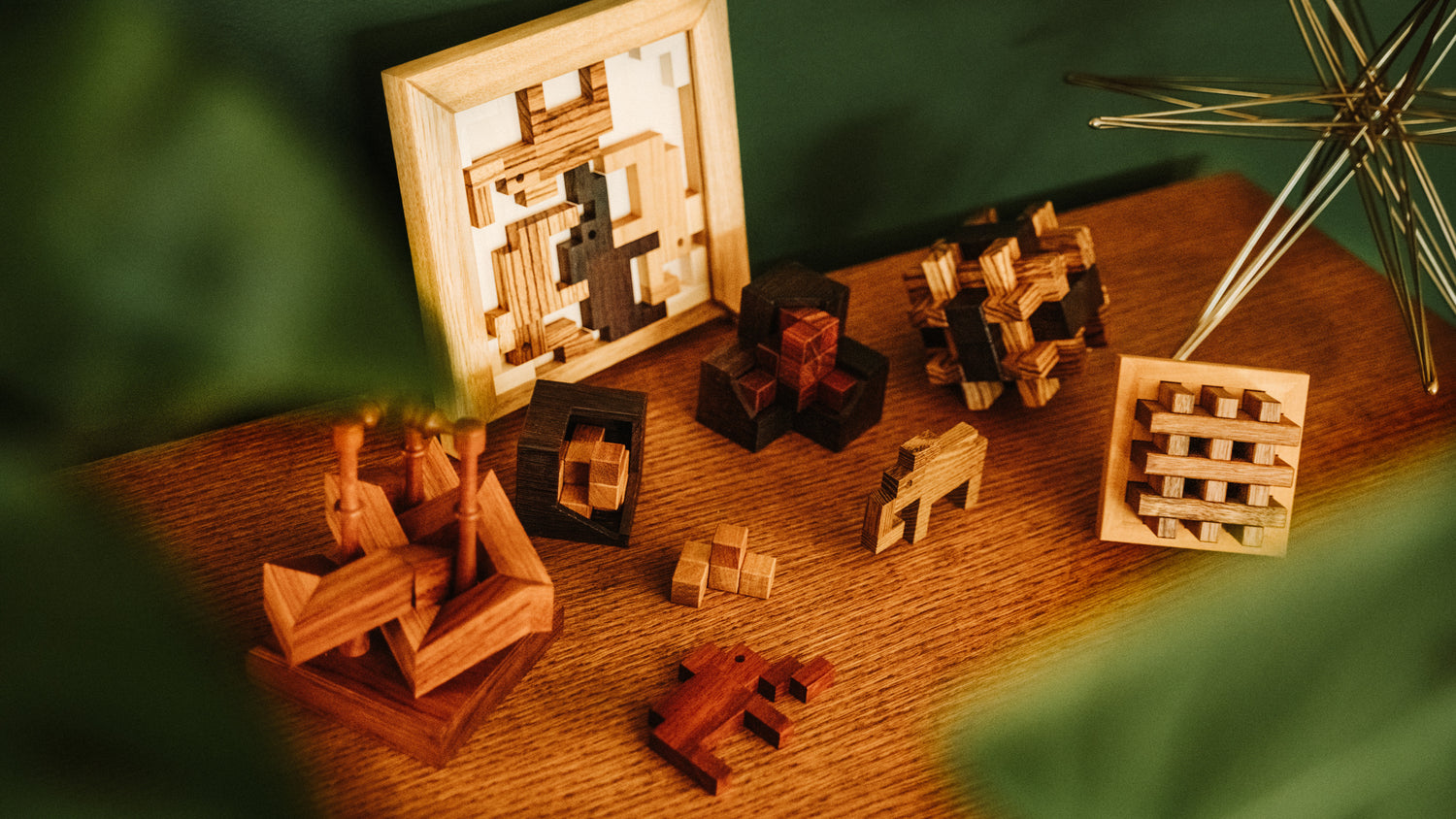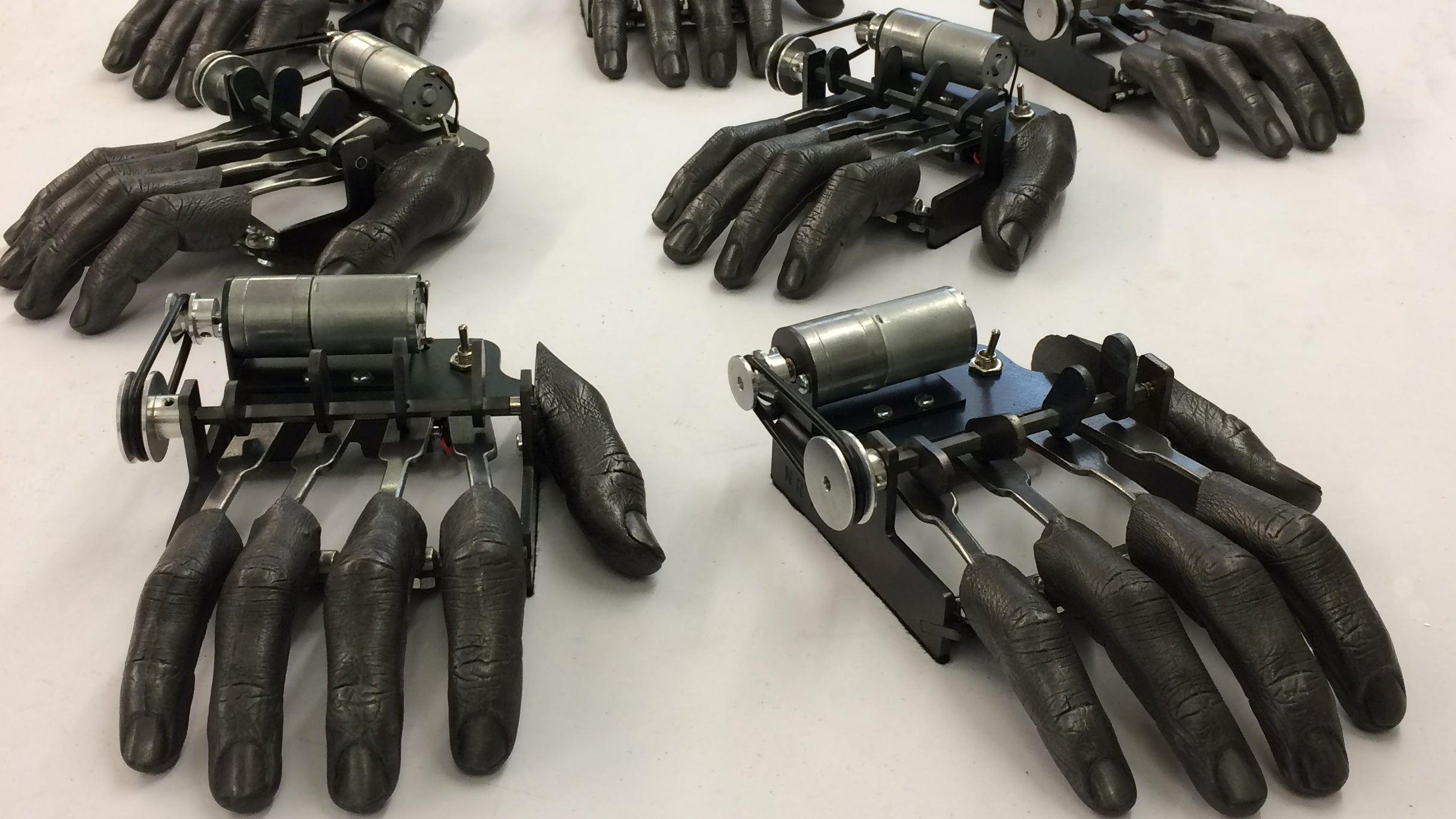In his book, The Playful Brain, author and neuroscientist Richard Restak explores the link between puzzle-solving and improved mental dexterity. “Whether we’re trying to solve a word puzzle, Sudoku, or a Rubik’s Cube,” he writes, “the task is the same: To see relationships and then manipulate them.” But ask any puzzler and they might tell you that mental dexterity is second to the satisfaction of conquering a challenge.
For some, this challenge begins with a packing puzzle, a type of interlocking sculpture made from wood, metal, or plastic. Often solved by trial and error, the goal is to disassemble the pack and put it back together again. Frustration is part of the appeal, and most end up craving the endorphin rush felt after the first victory. Many enthusiasts probably wind up at Pelikan in the quest for more complex and challenging packs.
Based in the Czech Republic, Pelikan is known as the Rolls-Royce of packing puzzles. Their three-dimensional wonders are made from various woods, including beech, birch, cherry, and walnut, each segment meticulously crafted, cut, and varnished. The company was reinvented in 2005, aiming to please puzzle enthusiasts around the globe with new designs and concepts.
Colliding Galaxies Puzzle
Pelikan puzzles are deceptive in their perplexity, sitting on shelves or coffee tables as an impressive objet d’art. And sometimes, the name of a puzzle will hint at a solution. In “Colliding Galaxies,” for example, four dark-brown wenge wood pieces must be packed into a 2.4-inch cubed box made of light cherry. Four pieces may not seem like much, but design subtleties require gravity for precise positioning. Master this task, and you might feel a little like you’ve accomplished something on the scale of, well, colliding galaxies.
Packing Puzzle Design
For some, such puzzle mastery evolves into the temptation to design one. That’s the case with Alexander Magyarics of Slovakia, one of Pelikan’s creative minds and the designer of “Colliding Galaxies.” “After about six years of collecting, I thought it was time to try to come up with my own designs,” he says. “When I had about 50 different designs ready, I said to myself, ‘Why not offer them directly to the best manufacturers in the world?’ I approached three different craftsmen, including the Pelikan team. To my surprise, they liked my work.”
Mouse Hole Puzzle
His first puzzle for Pelikan was “Wishing Well and Pincers,” a level-eight model (i.e., demanding) shaped like a wishing well. He’s moved on since then, producing the popular “Mouse Hole” and “L6,” among others.
Packing puzzles—unlike standard jigsaw or mechanical puzzles—help inform your spatial awareness. “Most often, I deal with the complexity of my new puzzles,” Magyarics says, “how to create it so there are challenges for more experienced solvers and at the same time kids could also play with it. … It can’t always be combined in one design, but if it works, it’s great.”
Magyarics is known for designing 3D packing puzzles with restricted openings, as seen in “The Rattlesnake.” Here, players use logical steps toward the solution instead of random trial and error. “The world around me is full of inspiration, I often use natural motifs—animals, plants, lightning,” he says.

A 19-century carved ivory puzzle ball from the Rijksmuseum collection
In that way, he’s adding to annals of interlocking puzzles as many designers have in the past. The puzzle balls and mystery balls of China are one example. These heavy spheres, usually made from ivory, consist of many intricately carved layers. Turn the ball in your hands to find a hole allowing you to move one the smaller spheres inside. You can only wonder how they fit together so perfectly.
Magyarics is much like an artist in the way he works, sketching designs before turning to software and, when necessary, permitting ideas to incubate. “For example,” he says, “I could not finish a design to a state where I would be satisfied with it. So I put it aside, and sometimes after a few months—even after more than a year—I returned to it and had it done in a few hours.” But the road from conception to completion isn’t alway long, he explains. “Sometimes it goes almost by itself—the design of ‘She Loves Me She Loves Me Not’ was finished in about 15 minutes.”
Looking forward, he plans to keep on designing for Pelikan and others with the hope of making the world a little happier and healthier. “Please, go out and play with your kids, parents, grandparents, friends,” he says. “With or without puzzles—just don’t forget to play!”
Learn more about Pelikan packing puzzles and Magyarics’ work here.
Words by Anne-Marie Yerks









Leave a comment
This site is protected by hCaptcha and the hCaptcha Privacy Policy and Terms of Service apply.